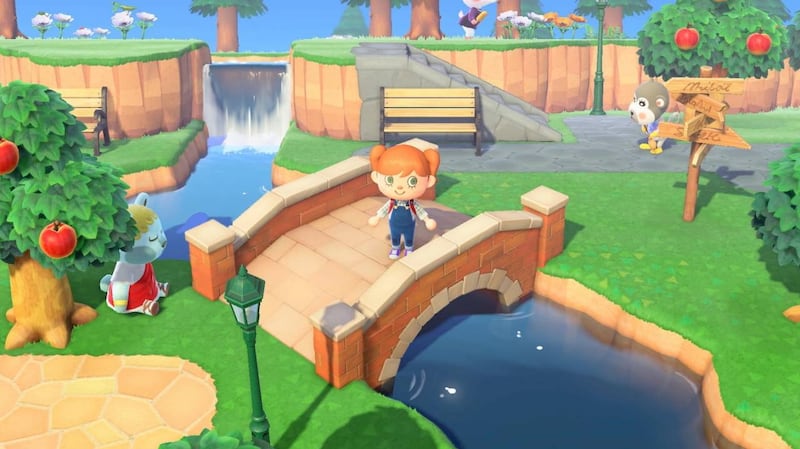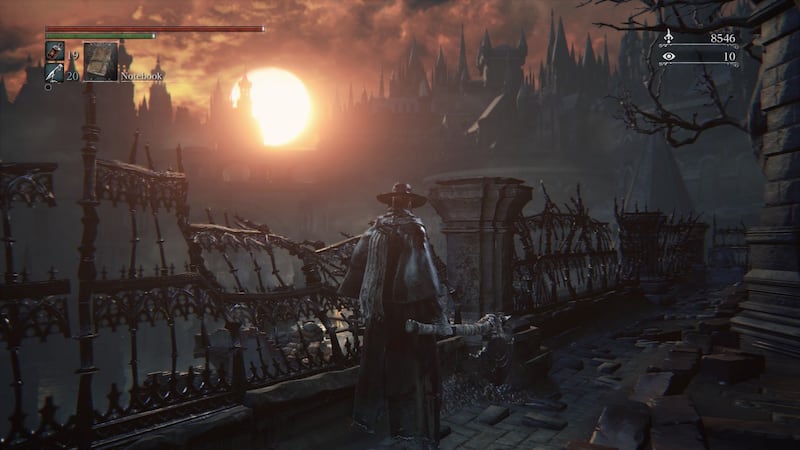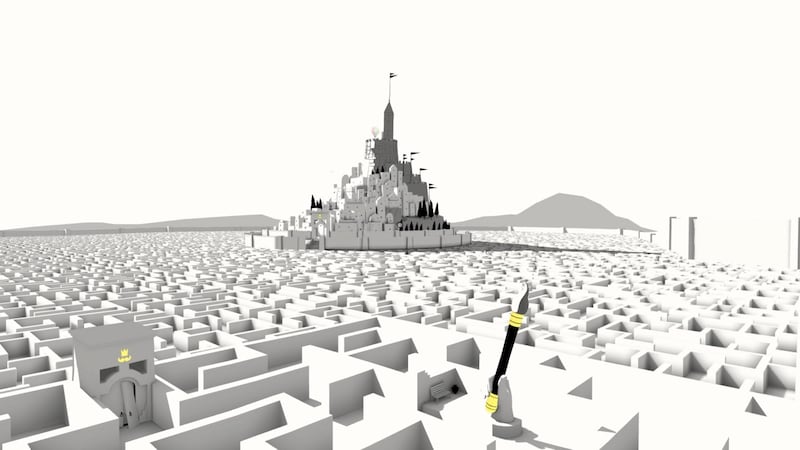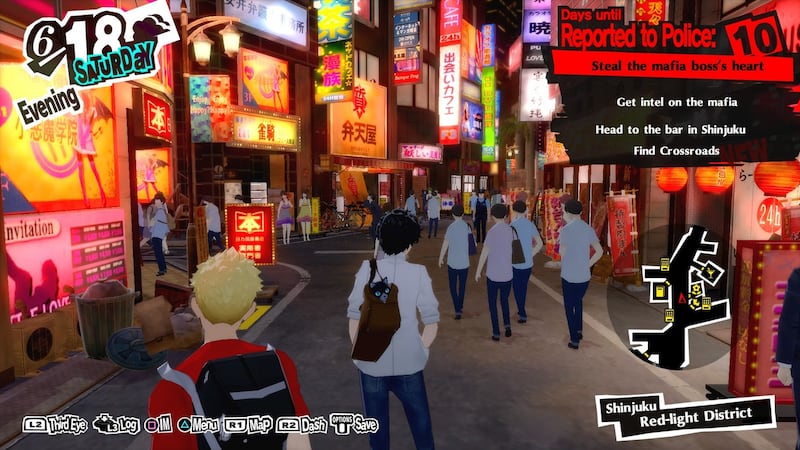I’m used to clocking out on a Friday before hurriedly getting ready to meet my friends in our local pub. As a result, the last few Fridays have triggered a sort of phantom itch, seemingly unscratchable and perpetually distracting.
It is essential we stay at home in order to defeat the pandemic with which we are all at war. But it is a struggle, at least temporarily, when we must do so at the cost of normality and connection.
My friends and I made a plan. We bought some beer, individually, and donned our trusty headsets. We installed Minecraft on our PlayStations and created a world we could all access from the comfort of our bedrooms. And then we built our local pub, Smyth’s of Donabate. We spent Saturday and Sunday night there, hanging out in a digital twin of our local just like we would in its real-life equivalent.
Throughout their 40 years of mainstream appeal, video games have undergone the rapidly changing processes of a maturing art form. Today’s innovation is tomorrow’s cliché, while yesterday’s obsolescence is next week’s new epoch.
However, there are two apogees of contemporary game design that have carved their names into the annals of digital culture: diversity of virtual environments, and purposeful communication.

Our virtual pub is only able to exist as a result of both, but barely scratches the surface in terms of the capabilities of video games across the board. We may be stuck at home right now, but through games we can explore wonders as spectacular as their real-world counterparts, and share the experience of witnessing them with people all over the world.
Unquantifiable examples of this exist, but let's start with an easy one: a little over a week ago, Animal Crossing came out for the Nintendo Switch. It's a game that sees you voyage to a deserted island, upon which you foster a small community of people – or animals.
As the game progresses, more and more would-be globetrotters venture to your island, and as your society grows, so too do the amenities available to you. Before long you’ll have a museum, which is curated by a paleontologist owl who is more than eager to discuss everything from Brontosauruses to zebra turkeyfish, and a booming, bell-based economy founded upon turnips and seashells.
In many ways it’s a simple game, and is largely intended for children –although, like any good Pixar film, it is meticulously designed for adults as well. Moment-to-moment play is primarily based on using certain tools, like shovels, axes, and fishing rods, and crafting items in order to add character and purpose to your island.
Its simplicity is its trump card, because at the heart of Animal Crossing is the ability to connect with others. By visiting the Dodo Airport, located at the southernmost point of every island, you can either visit friends or open your gates to them. This is where friendly competition begins to rear its irritating head –I often get annoyed when someone has arranged their fencing in a more aesthetically pleasing way than mine, or when they’ve managed to fill out a museum exhibit I’ve been gunning for since last week.
Great whites
The Minecraft/Animal Crossing dichotomy is important here, not because of any specific difference between the two games as artefacts, but because of how they are distinguishable from one another to me, personally, and to other people. When I play Minecraft, I play with the lads down the road who I likely won’t see for the next few months. We drink in our virtual pub and fight skeletons with pixel-art pickaxes.
When I play Animal Crossing, however, I regularly visit fellow journalists from all over the world. Animal Crossing attempts to have region-specific significance, it’s currently summer on my Argentinian friend’s island. As a result, if I take a flight over there –which is the only flying I’ll be doing for the foreseeable future – I can find hammerheads and great whites lurking in the sea encompassing his town, as opposed to the boring carps and sea bass my island is surrounded by.
It’s important to note that Minecraft and Animal Crossing can also be experienced individually –I actually play both games alone at least semi-regularly.
However, the real charm they possess and the factor that differentiates them from other, more ostensibly serious games is that they naturally encourage lighthearted and breezy socialising, which is obviously of particular importance to people who are currently in lockdown.
But you don’t need to have legions of friends with the same games as you in order to experience what they have to offer. In fact, some of the most interesting and innovative games around –at least from a digital tourism perspective –are emphatically intended to provide single-player experiences.
Not all of these games are necessarily new. As a result, they’re readily available from digital storefronts and are, for the most part, relatively inexpensive.

Perhaps the best example is The Witcher 3, released by Polish game studio CD Projekt Red back in 2015. Based on the short stories and novels of Andrzej Sapkowski, The Witcher 3 catapulted the series into the mainstream, to the extent that Netflix recently ordered a second season for last year's small screen adaptation of the fantasy saga.
It’s likely that you’re beginning to grow tired of the sight of your kitchen walls, and weary of the view of your bedroom ceiling. Visiting the world of The Witcher provides you with an antidote, affording you access to the shady side streets of Novigrad, the weather-beaten crags of Skellige, and the French-inspired vineyards of Toussaint.
You’ll fight enemies derived from Slavic folklore, form friendships with elves, dwarves, and dopplers, and play cards until early in the morning with people willing to bet their socks on one last hand. Your horse will regularly find its way onto rooftops. Don’t worry if that happens, it’s normal.
Explore environments
The same principle exists elsewhere, too. Bloodborne allows you to roam the Victorian-based streets of Yharnam, exclusively occasioned by Lovecraftian monsters and maddened, holed-up villagers.
Horizon: Zero Dawn combines the seemingly immiscible worlds of speculative fiction robotics and fantastically archaic tribal communities. NieR: Automata presents an image of a world usurped by machines, and its juxtaposition of untamed nature with hi-tech dereliction is almost unparalleled in art (its writing is also remarkably original, boasting philosophical absurdity comparable to early Beckett, and regularly referencing the likes of Nietzsche, Sartre, and de Beauvoir in a non-pretentious and organic way).
The key difference between a video game and say, a film or TV show, is that it allows you to explore environments consciously and at your own pace. Indie titles are particularly clever in this regard: A Short Hike, which came out in early 2019, takes less than an hour to complete and would run on any device more powerful than a calculator.
It sees you take on the persona of a bird named Claire and tells the story of… a short hike. But the brevity of the hike is misleading – rushing it defeats the purpose of the game, which has so much more to offer if you’re willing to explore its esoterica and speak to the island’s other inhabitants.

Meanwhile, The Unfinished Swan is set in a world without colour. Instead of firing bullets, as is the case in a lot of shooting games, you fire paint. If you hit a solid object that is currently invisible due to the fact the game starts as a whitewash, it will appear in black. And so you paint your way through the world, chasing a mysterious swan through castles, rivers, and labyrinths in a universe of art and joy.
On one hand, video games can offer us a means of speaking to those we can’t see right now. Admittedly, a phone call enables a similar kind of communication –but it lacks the same meaning, or unity of purpose. When you play a game with someone, you are working towards the same goals, consciously co-operating in order to achieve mutual progression. The game itself provides you with a means of sharing something: an experience.
But if you’re on the other side of things and want to use games as a medium for escapism, that’s possible too. Sometimes we spend far too long at home, surrounded by the same environments, the same people; why not dip into a game that takes place in a fantasy world detached from our own, or supposes an imagined future set hundreds of years from now.

You could play Halo one minute, and plug in Dragon Age the next, and all of a sudden you’ll have travelled from futuristic space stations to the barracks of a Lord of the Rings-esque fantasy faction in the blink of an eye. You can visit real-life Tokyo in Persona 5 – seriously, even the underground lines are the same –or check out a post-apocalyptic depiction of Washington, D.C. in Fallout 3.
It is essential that we stay at home for the foreseeable future to protect ourselves and others. At times, it will be mundane, and it will be lonely. But video games allow us to visit all kinds of places, both real and imagined, without having to put ourselves or anybody else at rise, while simultaneously enabling us to share experiences with others, regardless of how far apart we are.
Most importantly, however, they provide us with a means of stimulating our imagination, our longings for nostalgia, and our intellectual curiosities while we force our own private spheres to shrink in order to ensure that those of others in posterity can grow. If you’re struggling to stay occupied at home, it’s worth your while to try a video game or two.

















